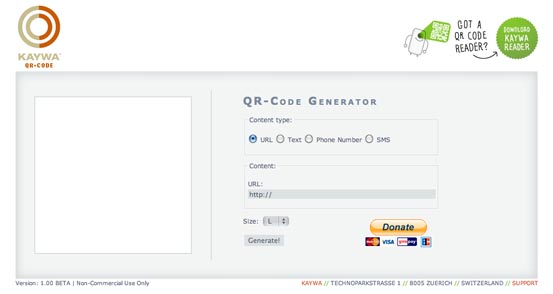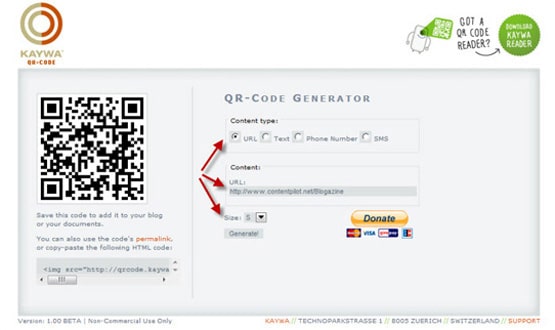Do you want to find a way to compete better at a low or no cost? Are you ready to be viewed as the most relevant expert in your field? Well, if more effective marketing is on your list of resolutions for 2012, give this one a try: “I resolve to make my firm’s website more dynamic!” Better yet, here are three things you can do to follow through. With the possible exception of “lose weight” or “call my brother more often,” it will be the best thing you do all year. And the only out-of-pocket expense is a little bit of your time.
1. Check Your Relevance
What is the freshness date of your content? If you launched a website refresh in 2011, you may think your Internet work is done. The fact is, those design and content updates are sooo, well, 2011. Destination news sites have spoiled us when it comes to the currency and relevancy of content. WSJ.com, CNN.com and NYTimes.com are just three of hundreds of news sites that offer not just today’s news, but this hour’s breaking news.
It’s impossible for most law firms to meet that high standard of currency. Still, every law firm should critically review content at least every year, if not more often. Every piece of old content causes a visitor to question whether you and your firm are stale. It taints the perceived efficacy of the good content you have. But, with potentially thousands of pages of content, how do you slog through it all and test its relevance? Here’s how:
- Choose 30 keywords that are important to your firm and practice.
- Plug them one-by-one into your site search and view the search results. If you represent multinational companies, for example, “FCPA” should lead to a page of results that are both up-to-date and important.
- Answer the questions, “Do the search results present our experience in the best light? Do they highlight our best competencies?”
- If the news articles or e-alerts appearing in the search results are outdated or irrelevant, delete them.
2. Make Sure Your Offline Activities Drive Targeted Traffic to Your Site
Do your offline credentialing activities drive targeted, qualified traffic to your website? Every (I really mean every) speech and presentation you give should drive traffic to specific pages of your website. Write your speeches with this in mind. Tell a story about a current event that can be analogized to your specific subject matter, use keywords that are in the news and in conversation and relate to your practice, and ensure that these top keywords appear in your bio and practice description (and that they produce relevant search results if a visitor searches by them).
Include various URLs in your presentation materials that answer your audience’s questions—link not to your main domain, but to interior pages, such as www.firmname.com/fcpa/india or www.firmname.com/ThomasJones. But don’t stop there—take it one step further.
3. Create QR Codes for Important Website Pages
Quick Response (or QR) codes are becoming ubiquitous in certain fields—such as automotive and real estate, on movie posters near train stations and on products advertised via airport dioramas. But they are seldom used by lawyers as a marketing tool. Quick Response codes are basically two-dimensional bar codes that can be read by a mobile phone camera equipped with a code-reading app. Once the QR code is scanned, for instance, the web address embedded in the image pops up on the phone’s browser, saving the device’s owner some typing. Here is a short primer if you aren’t as familiar as you’d like to be.
While the codes look like hieroglyphics, they are a one-click pathway to the pages of your website—such as your bio, blog or e-alert library—that are the most relevant to what you do. You can instantly create them for new pages on your site to alert visitors and drive traffic to your latest resources—and include the QR codes in your handouts and on your business card, too.
Here is your step-by-step QR “how-to:”
- Download a QR Reader app to your smartphone and tablet devices.
- Open the website page or blog post you want to promote.
- Copy the URL of that page.
- Go to http://qrcode.kaywa.com/.
- In the QR-Code generator, choose your content type: a URL for the specific web page, a piece of text, your phone number or a text message. Next, type in the URL for that bit of info, choose the output size for your QR code (S, M, L or XL—just like buying a sweater), click Generate! and voila—it will appear in the box on the left. In this example below, I have generated a QR code for our Content Pilot Blogazine, and did so in less than 15 seconds.
- Now, save the QR code to your Pictures file on your computer (label it, so you can keep track of each one you create), then liberally insert it into your print and presentation materials.
- To test it, open your smartphone QR Reader app and scan your new QR code, and it should launch the website or blog page on your device.
Deborah McMurray is CEO and Strategy Architect of Content Pilot LLC, a strategy and technology company. Deborah and her team specialize in the design of websites and web-based proposal centers, intranets, experience databases, and other marketing technology tools and strategic initiatives. Deborah is a co-author of The Lawyer’s Guide to Marketing on the Internet, 3rd ed. and co-editor of The Lawyer’s Guide to Marketing Your Practice, 2nd ed. with James A. Durham.
Sign up for Attorney at Work
Get good ideas every day for enterprising lawyers, delivered to your in-box, when you subscribe to the Daily Dispatch.
Illustration ©ImageZoo.


















